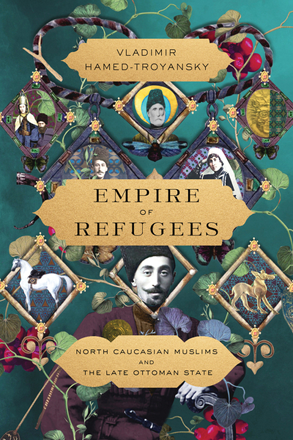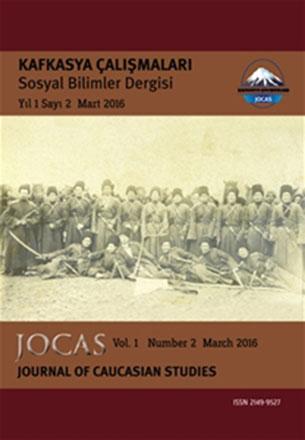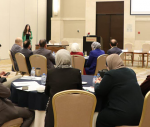You are here
Forgotten exodus: Tracing North Caucasian Muslim Diaspora’s odyssey
By Saeb Rawashdeh - Apr 25,2024 - Last updated at Apr 28,2024

Book cover: Vladimir Hamed-Troyansky, ‘Empire of Refugees: North Caucasian Muslims and the Late Ottoman Empire’
AMMAN — In the middle of the 19th century, the northern Caucasus was a battlefield between the Russian and the Ottoman empires. The mountainous region between the Black Sea and the Caspian Sea had a majority of Sunni Muslim population. The following ethnic groups ended up as refugees in the Ottoman Empire: Circassians living on the Black Sea coast, Eastern Circassians who lived in the uplands, Abkhazians, Karachays, Balkars, Ossetians, Ingush, Chechens and Dagestanis.
“The dominant literary language of the region was Arabic,” noted the historian Vladimir Hamed-Troyansky from The University of California, Santa Barbara during a lecture called “Empire of Refugees: North Caucasian Muslims and the Late Ottoman Empire”. The event was organised on Monday by the American Centre of Research in Amman.
Arabic was the lingua franca in the Caucasus region, where various languages were not related to each other and communities in northern Caucasus were autonomous. They were not part of the Russian Empire, nor the Ottoman Empire, nor Iran.
The Russian Empire, at the peak of its military campaign against the indigenous Muslim population in 1863-1864, carried an ethnic cleansing which resulted in demographic changes of the area.
“Within two years, about half-a-million Circassians or about 90 per cent of Western Circassians fled by boats across the sea to the Ottoman Empire,” Hamed-Troyansky explained, adding that since the 1990’s, many Circassian activists in the diaspora and Russia called for the recognition of these atrocities as genocide.
The Russian Empire consolidated its grip over the Caucasus and continued its expansion after being temporarily hindered after the Crimean war in 1856.
On the other hand, “the arrival of Circassian refugees in the Ottoman Empire created the largest refugee crisis at that point,” Hamed-Troyansky said, noting that the Muslim emigration to the Ottoman Empire continued after 1864.
“Much of the emigration stemmed from dispossession, as Russia passed a new land reforms, many Muslims lost their land and were often forcibly resettled somewhere else in the Caucasus, often between newly established Kozak stations,” Hamed-Troyansky.
New land reforms gave a privileged status to Russian settlers and Caucasian Muslims had no other option but to leave.
Over a million of Caucasian Muslims left the area during that period, many choosing perilous sailing by the sea where they were also vulnerable to different epidemics.
After the Russo-Ottoman war 1877-1878, Circassians who were previously settled in the Balkans moved into Anatolia and the Levant.
“By 1914, there were over 1100 refugee villages scattered from the Eastern Trace to Homs, Damascus and Amman,” the historian said, adding that today, North Caucasian diaspora numbers 2-3 million people in Turkey, 100,000 in Syria, around 50,000 in Jordan, 10,000 in Iraq and small communities elsewhere.
However, very few of them in the Middle East speak their ancestral languages. Their first languages are Arabic or Turkish.
“However, after 160 years, the preservation of the North Caucasian heritage is remarkable,” Hamed-Troyansky.
“The Ottoman refugee regime offers us a new way of thinking about the history of global migration and resettlement. It was a system set up as a response to European colonialism and it was based on a distinct genealogy rooted in Islamic history,” Hamed-Troyansky concluded.
Modern Amman owes its development in the 19th century to Circassian refugees, the Ottoman railway, the Levantine mercantile capital and the local population, Hamed-Troyansky underscored.
Related Articles
AMMAN — After the military campaigns of tsarist Russia in 1863–64, which resulted in the ethnic cleansing of Circassians and the displacemen
Istanbul: Journal of Caucasian Studies (JOCAS), September 2015-March 2017The Journal of Caucasian Studies (JOCAS) is a peer-reviewed, bi-ann
AMMAN — The Great Arab Revolt is the cornerstone of Jordan’s political legitimacy, according to an Oxford University professor.During a


















